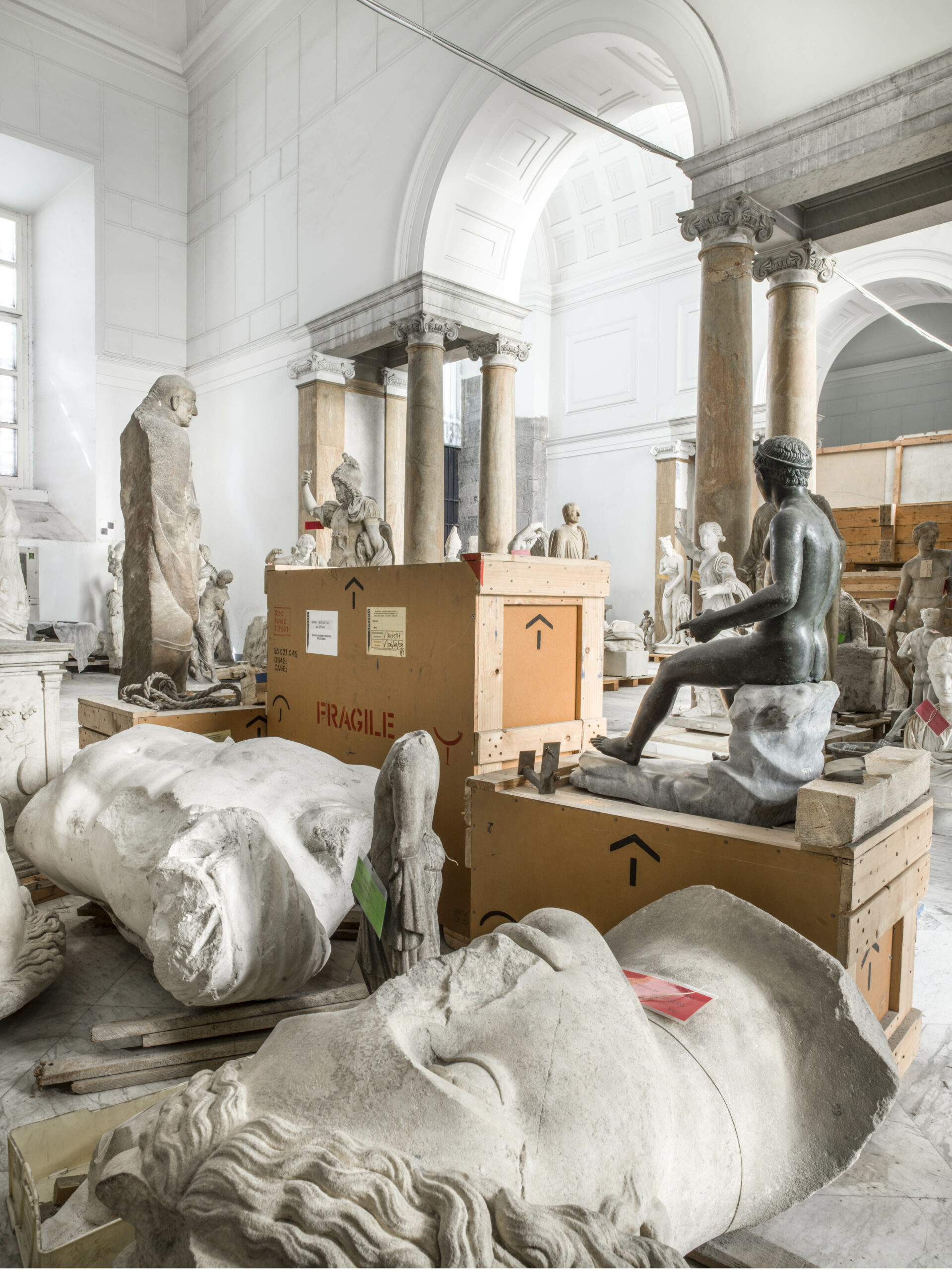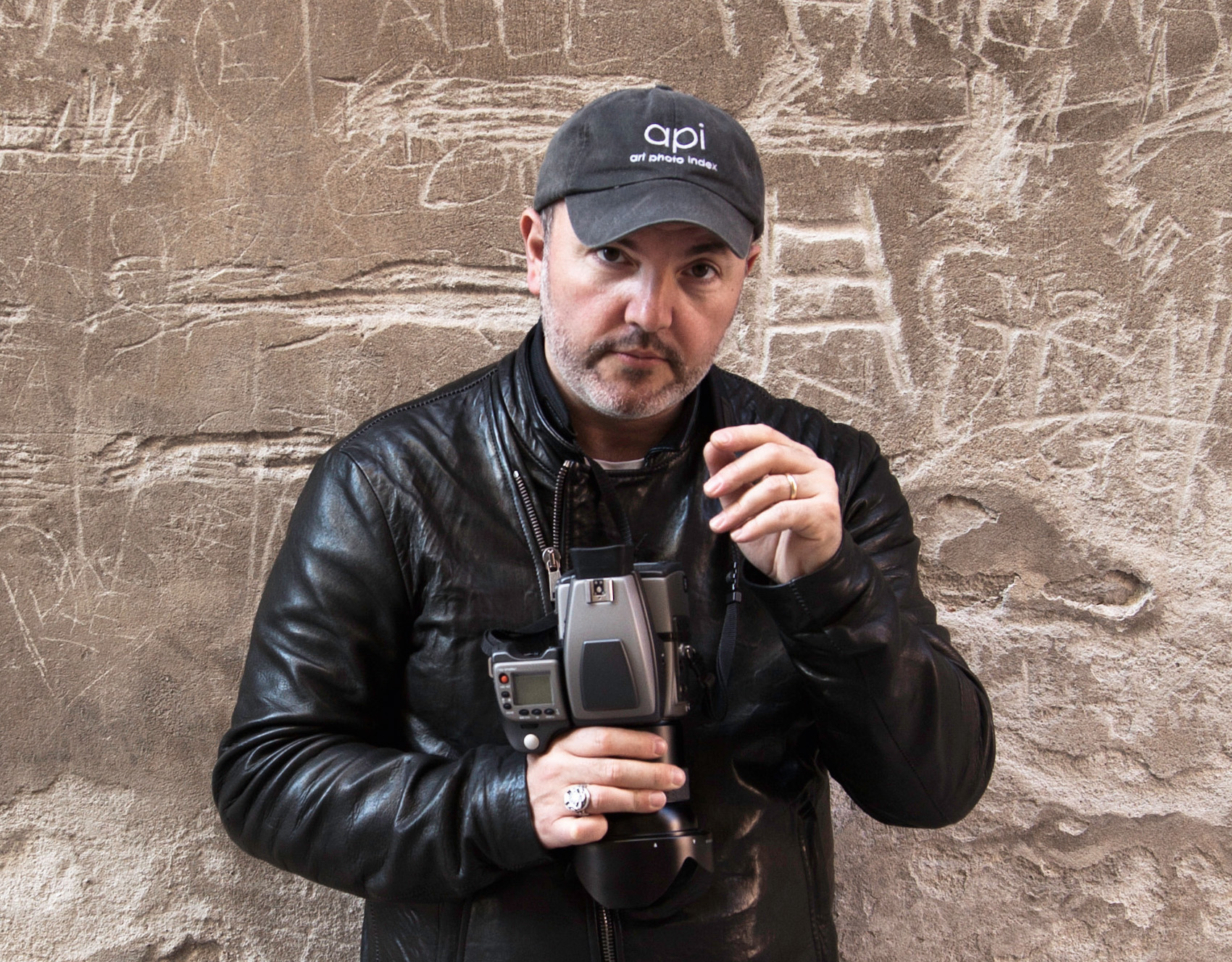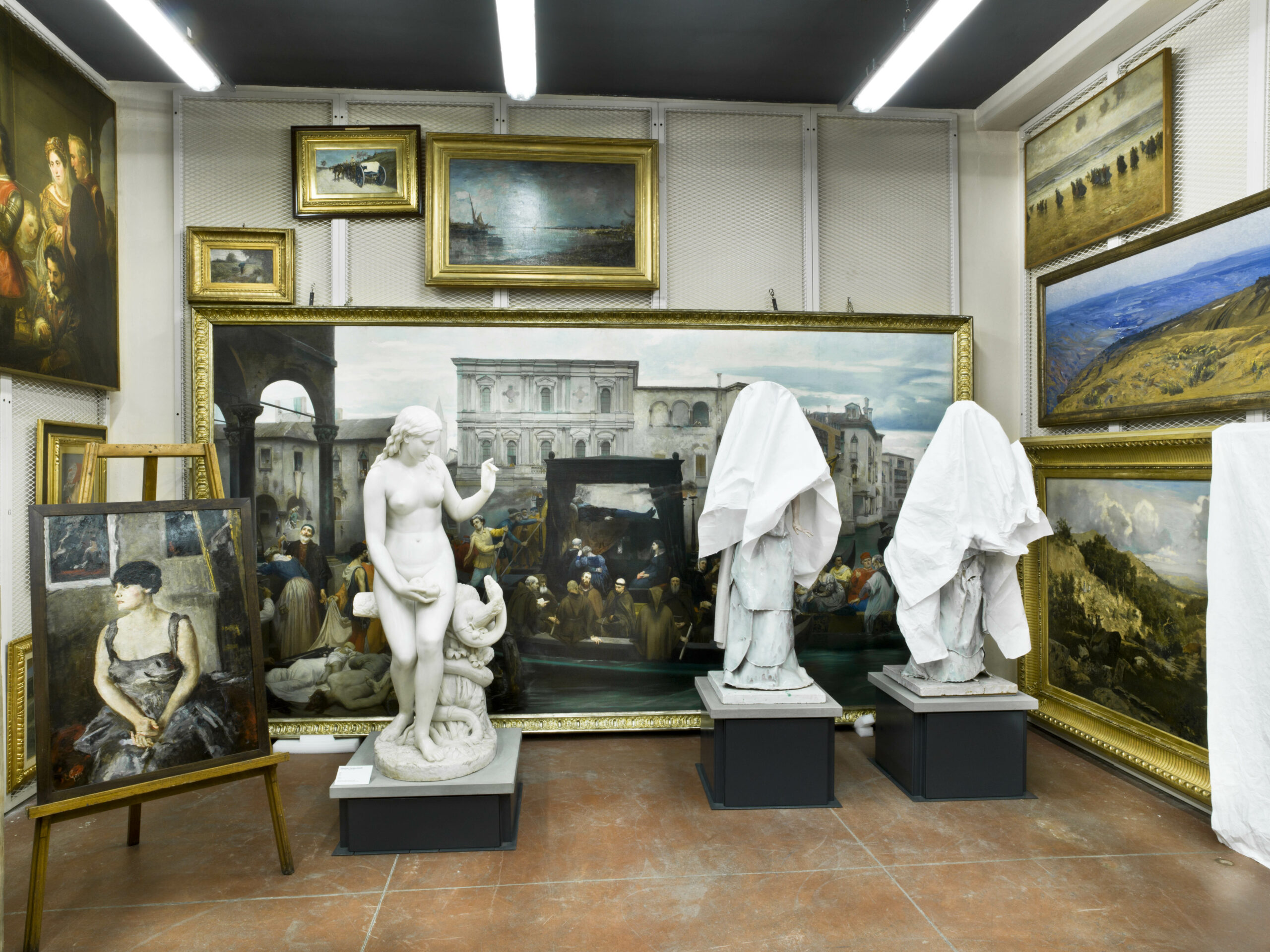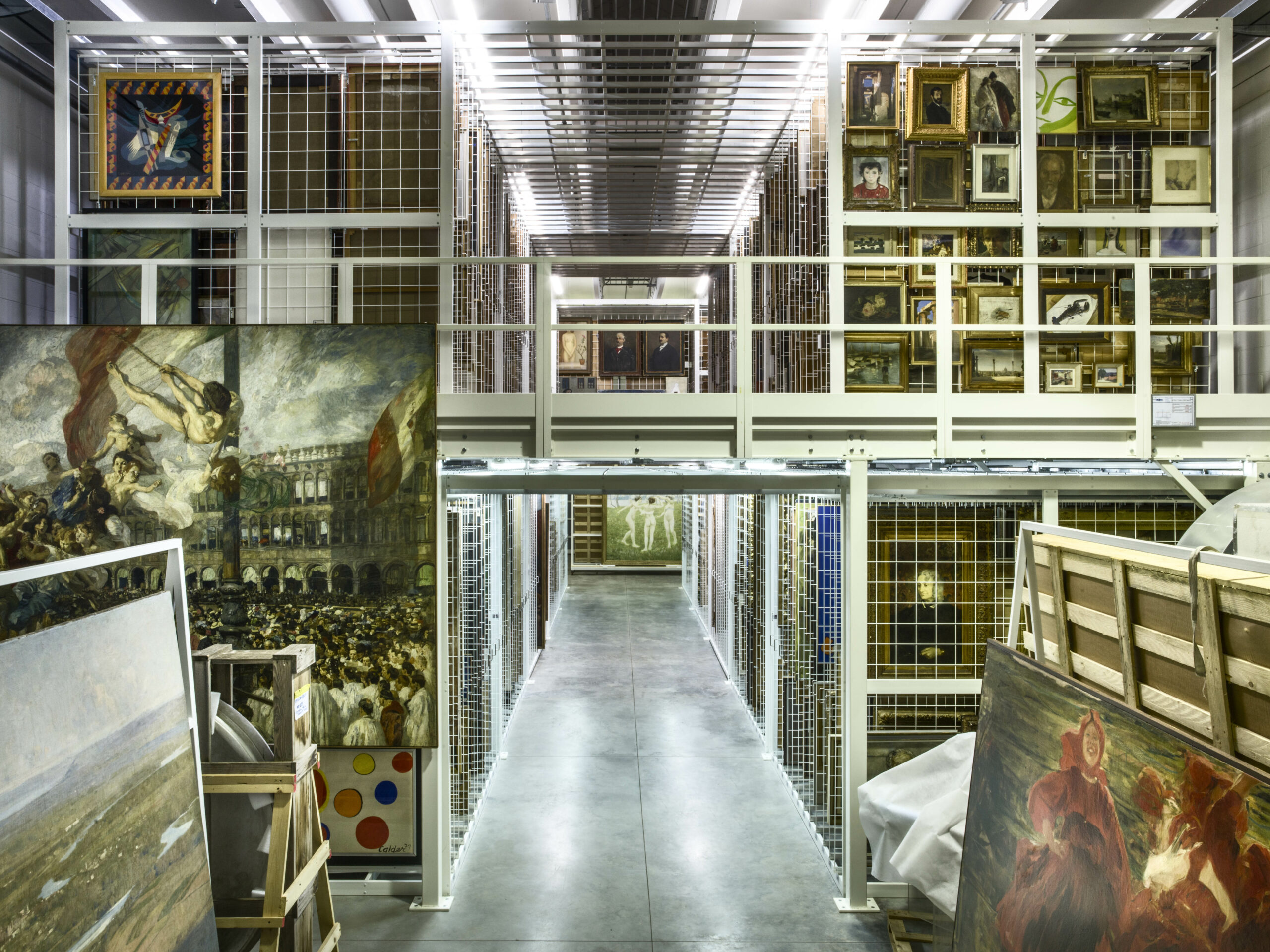Treasure Rooms
Mauro Fiorese
Hidden Treasures in the museum depot
Unnoticed by the public, museums make a significant contribution to our culture: after all, the world's art treasures are not only exhibited by them, but above all preserved, restored and researched. The collections contain far more works than are shown. In the major museums, only ten percent of the collection is exhibited; the rest is stored. Mauro Fiorese captures the magic of the hidden, the unease of the forgotten, the charm and comedy of the unveiled in his photographs. Questions about the meaning of art (for the artist, posterity and history) are always present.
In 2014, the Mauro Fiorese began the now award-winning series "Treasure Rooms" from which 15 works are part of "KAIROS. The Right Moment." The project started with Christian Zott and Wolfgang Beltracchi was close to Fiorese's heart until his untimely death in 2016. Afterwards, his assistant Valentina Zamboni expanded the series for KAIROS with five photographs from other European museums.

Mauro Fiorese: Treasure Rooms of the National Archeological Museum – Naples, 2015
Statues, heads and torsos lie and store in a high hall, as if waiting to be overgrown by the flora of an Arcadian landscape or transported into de Chirico's imagery. "Fragile" is written on a transport crate - and yet nothing seems more indestructible than these finds of a past culture.
Mauro Fiorese's photograph was taken in the depot of the Museo Archeologico Nazionale in Naples. The MANN dates back to the Bourbon King Charles III of Spain, who, as King of Naples and Sicily, added finds from Herculaneum and Pompeii to his mother's collection of antiquities - the Farnese collection. Under his reign, excavations began at the two sites beginning in 1738. The artifacts found there still form the core of the MANN's collection of some 275,000 objects. It is undisputedly one of the oldest and most important archaeological collections in Europe.
Fiorese composes the photographs through the careful positioning of the camera and the choice of framing. Surprising effects often emerge: New pictorial spaces open up, works from different centuries and from different genres enter into a dialogue. The works thus give the impression that the photographer is curating an imaginary exhibition. By using cotton paper for printing and by framing them under glass in the wooden museum frame, the photographs are connected to the works of art they depict. The boundaries between painting and photography, between past and present are blurred.

Mauro Fiorese (1970–2016)
was an internationally acclaimed photographer, as well as a lecturer and curator. His work was shown at the 54th Venice Biennale. In 1998, Fiorese began teaching at the University of Verona and the Institute for European Design in Milan. In early 2016, he was honored as one of the world's most socially significant artists at the World Economic Forum in Davos. Before his untimely death in 2016, he collaborated with Boxart Gallery in Verona on the highly acclaimed "Treasure Rooms" series, which won the top prize at the Milan Photo Fair in 2015. This exhibition is thanks to his collaboration and friendship with initiator Christian Zott.
How did you get the idea to photograph the depots of large museums?
Of course, such an idea does not come like a sudden, unforeseen epiphany. It rather developed step by step. The spark came to me in my studio during a conversation with friends, when we were standing in front of one of my productions and began to discuss. We were talking about the diversity and the enormous amount of artwork that our ancestors had created in Italy, but which unfortunately remains hidden from the majority of people. It was from this conversation that the idea for the "Treasure Rooms" was finally born.
How did you go about it?
I did not arrange things, but positioned myself to capture the atmosphere of these otherwise inaccessible places with their special aura. The concept here goes far beyond photography. It's not for nothing that we put the photographic image, which is a contemporary art form, in a universal picture frame, a - let's say - Flemish frame with a brass plate. Like a container that reminds us of the place that no one can see.

Mauro Fiorese: Treasure Rooms of the Galleria d’Arte Moderna – Turin, 2014
A large-scale painting on foam pads in the depot: it comes from the workshop of Enrico Gamba (1831-1883) and shows the funeral of Titian. The painter, who died of the plague in 1576, is given a solemn funeral; the painting shows the body being transferred in a barque, while on the left the naked bodies of the plague dead lie on the ground. The painting, reflecting the importance of immortal art and the mortal artist, has itself been forgotten. Fiorese places it at the center of his carefully composed photograph, in which the boundaries of space and image blur.

Mauro Fiorese: Treasure Rooms of the Ca’ Pesaro – Venice, 2015
In Palazzo Ca' Pesaro on the Grand Canal, behind a splendid marble façade is a varied civic collection, marked by the modern influences of the Biennale in the 20th century. Fiorese's photograph in the Deopt features works by Fortunato Depero, Cagnaccio di San Pietro and by Alexander Calder, among others. The large-scale oil painting on the left of the shot is by Ettore Tito and depicts the inauguration of the new bell tower in St. Mark's Square in 1912.
In addition to the examples presented, the Treasure Rooms photographs in the Kairos exhibition show the depots of the following museums:
- Galleria Borghese, Rome
- Museo Nazionale di Capodimonte, Naples
- Castelvecchio, Verona
- Museo Correr, Venice
- MART, Rovereto
- Galleria d’Arte Moderna, Torino
- Uffizi Gallery, Florence
- Gallerie d’Italia, Vicenza
- Belvedere, Vienna
- British Museum, London
- Museum Folkwang, Essen
- Museo Arqueológico Nacional, Madrid
- Victoria and Albert Museum, London
More "Treasure Roos" holds Mauro Fiorese's Verona gallery: Galleria Gaburro
Header: Treasure Rooms of the British Museum – London, 2017 by Valentina Zamboni/Mauro Fiorese